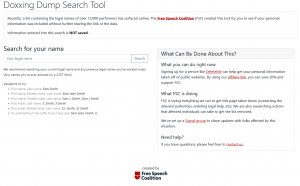Will we see a .google before too long? A .youtube? It looks increasingly likely, as Google confirmed Tuesday that it will apply for a generic top-level-domain.
Google confirmed that it had applied for the use of “Google’s trademarked TLDs” to the Internet Corporation for Assigned Names and Numbers. Those applications are due to be closed on April 12, when Google said it would disclose exactly which top-level domains, or TLDs, that it had applied for.
Until then, company representatives declined to comment on Google’s specific plans.
“We plan to apply for Google’s trademarked TLDs, and we’re currently exploring opportunities to apply for new ones as well,” a Google spokeswoman said in an emailed statement. “We want to help make this a smooth experience for web users—one that promotes innovation and competition on the Internet.”
Fifty-eight trademarks contain the word “Google,”, according to the U.S. Patent and Trademark Office, with some belonging to third parties. Google’s most well-known brands are most likely “Google” itself, followed by “YouTube,”; it’s not unlikely that Google could apply for TLDs with some derivative of Google Plus (“.gplus” or “.plus”) or Google Play (“.gplay” or “.play”). Alternatively, it could choose “play.google”.
Facebook, however, has not taken the same step, choosing not to apply for a generic TLD, Advertising Age noted.
Last year, ICANN began putting timetables in place for the creation of so-called gTLDs, domains with the same status as .com, org, and .net. The generic TLDs can be just about anything, from .pcmag to .hotdog to .starbucks to .zebra, as long as a company or agency is willing to pay the $185,000 fee.
Last year, the first of these, .xxx, began rolling out, causing consternation among the porn industry, which largely felt that they were being forced to pay additional fees to maintain their brand equity. Even universities snapped up .xxx domains as a defensive measure.
The ICANN process allows a business or individual to pre-emptively apply for a related TLD during a “sunrise” period, preventing cybersquatting. But for some businesses, grabbing an available TLD is simply good business. according to Ben Crawford, chief executive of CentralNIC and dotBrand Solutions, which will acquire and manage the TLD for clients.
“The typical trademark owner would love to have their own top level domain,” because they become the gatekeeper for all domains with that suffix, Crawford said last year. “Every domain is under your complete control, with no fraud or phishing. It ends with the dot-brand. There’s no consumer confusion.”
Source pc.com






